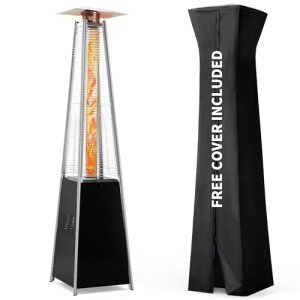The 10 Most Worst Multi Fuel Stoves For Sale FAILS Of All Time Could Have Been Prevented
Multi Fuel Stoves for Sale: A Comprehensive Guide
Multi fuel stoves have actually acquired increasing appeal throughout the years due to their versatility, efficiency, and aesthetic appeal. These stoves can burn different kinds of fuel, such as wood, coal, and biomass, allowing house owners to choose the most cost-effective and environmentally-friendly alternative based on their needs. This article intends to provide a thorough overview of multi fuel stoves, their advantages, considerations for buying, various types offered, and responses to frequently asked concerns.
The Benefits of Multi Fuel Stoves
Multi fuel stoves provide a variety of advantages for house owners seeking to enhance their heating solutions. A few of the crucial benefits consist of:
- Versatility: The ability to utilize different fuels enables property owners to adjust to changing situations, such as changing fuel rates or availability.
- Cost-effectiveness: Depending on local fuel rates, users might find cost savings by burning cheaper fuels like wood or coal.
- Ecological Impact: Many multi fuel stoves discharge lower emissions than traditional heater, especially when using sustainably sourced biomass.
- Aesthetic Appeal: Multi fuel stoves include a touch of heat and beauty to any living area, producing a cozy environment.
- Efficiency: Modern multi fuel stoves are developed to optimize combustion and heat output, offering an efficient heating solution for homes.
Kinds Of Multi Fuel Stoves
When considering a multi fuel stove, it's important to understand the various types readily available on the market. Below are some typical classifications:
Type
Description
Typical Fuel Sources
Wood Burning Stoves
Specifically created for burning wood logs and pellets.
Logs, wood pellets
Coal Stoves
Stoves optimized for burning coal, offering high heat output.
Anthracite, bituminous coal
Pellet Stoves
Use compressed pellets made from wood or biomass, efficient burning.
Wood pellets, biomass pellets
Combination Stoves
Capable of burning both wood and coal, using flexibility.
Wood, coal
Biofuel Stoves
Developed to burn liquid biofuels, promoting sustainability.
Bioethanol, biodiesel
Factors to consider for Purchasing a Multi Fuel Stove
Before investing in a multi fuel stove, there are a number of aspects to consider to guarantee the chosen design satisfies heating requirements and choices. Here are some critical factors to consider:
- Size and Capacity: Evaluate the heating requirements for the space and choose a stove with the suitable output. This is usually determined in kilowatts (kW).
- Efficiency Ratings: Look for stoves with high efficiency rankings, which represents much better fuel usage and decreased emissions.
- Product and Build Quality: Opt for stoves made from long lasting materials such as cast iron or high-grade steel that can hold up against heats.
- Price: The spending plan plays a significant function in decision-making. Consider both the upfront cost and continuous fuel costs.
- Installation: Some designs may need professional installation or specific flue systems. Inspect regional regulations and codes for compliance.
- Visual appeals: Consider the design and surface to guarantee it complements your home design.
FAQs About Multi Fuel Stoves
1. Can I use any kind of fuel in a multi fuel stove?
Multi fuel stoves are designed to utilize specific kinds of fuels. Always describe the producer's standards to understand which fuels are suitable.
2. How do I preserve my multi fuel range?
Regular maintenance consists of cleaning up the flue pipe, looking for clogs, and examining seals and gaskets. Following the producer's maintenance schedule is important for security and efficiency.
3. Are multi fuel stoves safe to utilize?
Yes, when properly set up and kept, multi fuel stoves can be a safe heating alternative. It is important to follow security policies and standards for installation.
4. Do I require a chimney for a multi fuel stove?
Yes, a lot of multi fuel stoves require a chimney or flue system to vent smoke and gases outside the home. Make sure that the system is installed according to local building regulations.
5. What is the average life-span of a multi fuel range?
With appropriate upkeep, a sturdy multi fuel range can last anywhere from 15 to 25 years, depending upon use and care.
Multi fuel stoves provide a versatile and efficient heating option for house owners, enabling them to choose their favored fuel type based on expense and accessibility. By considering Cheap Fireplaces Near Me of stoves, their benefits, and factors to think about when buying, people can make educated choices that will boost their home's comfort. With a broad variety of options offered, prospective purchasers must do thorough research, taking into account the stove's efficiency, fuel compatibility, and total style to find the very best suitable for their requirements.
In conclusion, while multi fuel stoves can look like a huge investment, their versatility and efficiency make them a worthwhile addition to any home. Whether it's for supplemental heating or as the primary source of warmth, a multi fuel range supplies a useful solution for the modern homeowner seeking to balance convenience with sustainability.
